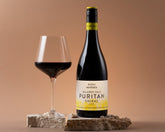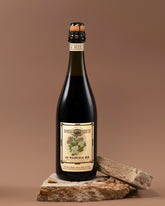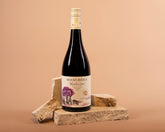Want to taste red wine like a professional? Mastering the art of wine tasting doesn’t have to be intimidating. At Guilt Free Wine, this guide breaks down the nuances of tasting red wine into easy steps that anyone can follow. From evaluating the colour and aroma to identifying flavour profiles, you’ll learn techniques that make every sip a sensory delight. Let’s refine your wine palate with expert tips and practical methods.
Table of Contents
- Key Takeaways
- Why Taste Red Wine Like a Pro?
- Step by Step Guide to Tasting Red Wine Like a Professional
- Benefits of Professional Wine Tasting
- Conclusion
- FAQs
Key Takeaways
- Observe the wine’s colour and clarity.
- Swirl the wine to release aromas.
- Use your nose to detect primary, secondary, and tertiary scents.
- Taste the wine slowly, focusing on sweetness, acidity, tannins, and finish.
- Pair the wine with complementary foods for the best experience.
Why Taste Red Wine Like a Pro?
Red wine tasting is an experience. It’s not just about the wine – it’s about discovering the story behind every sip. Professional wine tasters appreciate wines using their senses: sight, smell, taste, and touch. By honing these skills, you’ll enhance your enjoyment and understand why each glass is unique.
Step by Step Guide to Tasting Red Wine Like a Professional
- Begin with the appearance: The initial step in wine tasting is to carefully observe its colour. Hold the glass at an angle against a white background to assess its colour.
- Look at the depth: Light-bodied wines generally appear lighter and more translucent, while fuller-bodied reds have a deeper, richer hue and may seem opaque in the glass. This can hint at the wine’s grape variety and concentration.
- Check the rim: Young red wines tend to exhibit a vibrant, purplish tint around the rim, while older wines take on a brick-red or orange hue, revealing their age and maturation process.
- Swirl to Release Aromas: Swirling the wine helps aerate it, intensifying the aromas and preparing it for tasting. Gently move the glass in circular motions while holding it firmly by the stem.
- Look for the “legs” or “tears”: Take note of the streaks that appear as the wine returns to its original position in the glass. These “legs” are a sign of the wine’s viscosity and can indicate higher alcohol content or sweetness.
- Engage Your Nose: The wine’s aroma, also known as its “nose,” offers clues about its personality and composition. Professional tasters often break aromas into three main categories:
- Primary aromas: These are directly related to the grape and include fresh, fruity notes like blackberries, cherries, and strawberries, as well as herbal hints such as mint, eucalyptus, or basil.
- Secondary aromas: These arise from the fermentation process and can present as yeasty or creamy notes, like bread dough, butter, or toasted nuts.
- Tertiary aromas: As the wine ages, it develops more complex scents influenced by maturation, such as oak, tobacco, leather, vanilla, or earthy truffle notes.
- Sip and savour: Tasting wine engages both the palate and texture, delivering a rich and immersive sensory experience. Swirl it around in your mouth and let it coat your tongue after taking a tiny sip.
- Sweetness: Pay attention to whether the wine tastes fruity, like ripe plums or berries, or has a dry, less sweet character.
- Acidity: Wines with higher acidity will feel crisp and refreshing, while those with lower acidity will feel softer and more rounded.
- Tannins: Tannins create a drying sensation on the tongue and gums. These are crucial for a wine’s structure, particularly in bold, full-bodied reds.
- Body: Take note of the wine’s density and mouthfeel. Light-bodied wines are subtle and delicate, medium-bodied wines provide a noticeable presence, while full-bodied wines deliver a rich, weighty texture.
- Finish: After ingesting, the taste that lingers is known as the finish. High-quality wines often have a long, layered finish with evolving flavours.
- Pair with Food: Food and wine pairing is where the experience truly comes alive, as each enhances the flavours of the other. Red wines are incredibly versatile when paired with the right dishes:
- Light reds (e.g., Pinot Noir): These wines have delicate, bright flavours that work beautifully with lighter proteins like roasted chicken, turkey, or even salmon. Their acidity complements subtle, herb-based dishes.
- Medium-bodied reds (e.g., Merlot): These wines offer more structure and balance, making them ideal with pasta dishes, lamb, or roasted vegetables. They offer a balance between delicate and robust choices.
- Bold reds (e.g., Cabernet Sauvignon): With their powerful tannins and full body, bold reds pair perfectly with hearty dishes such as grilled steaks, slow-cooked beef, or aged cheeses like cheddar or gouda.
Benefits of Professional Wine Tasting
Learning how to taste wine like a professional offers several benefits:
- Enhanced enjoyment: Tasting wine professionally allows you to detect and appreciate subtle notes that might otherwise go unnoticed, turning every glass into a unique experience.
- Deeper knowledge: Understanding the wine’s origin, grape varietal, ageing process, and regional influences helps you connect with the story behind each bottle and its distinctive characteristics.
- Better wine selection: Developing a trained palate makes it easier to identify high-quality wines and choose bottles that suit your taste, occasion, and budget.
- Elevated dining experiences: Pairing wine expertly with food enhances the flavours of both, allowing you to create memorable dining moments and impress your guests with thoughtful combinations.
Conclusion
Learning to taste red wine like a professional transforms your appreciation of every bottle. By engaging all your senses sight, smell, and taste – you’ll unlock a world of flavours and stories in each glass. For expertly curated wine selections, tailored to help you enjoy wine guilt-free. Get in touch with us today to experience wine the way it’s meant to be enjoyed.
FAQs
-
How do I properly swirl red wine?
Hold the glass by the stem and make small circular motions. This allows the wine to breathe, enhancing and releasing its aromas.
-
What is the ideal temperature for tasting red wine?
Red wine is best enjoyed slightly cooler than room temperature, typically between 15–18°C.
-
What are tannins in wine?
Tannins are organic compounds naturally found in the skins, seeds, and stems of grapes. They give red wine its structure and a drying sensation.
-
How do I identify flavours in wine?
Focus on primary flavours like fruit, secondary notes like fermentation hints, and tertiary aromas like oak or spice.
-
What food pairs best with red wine?
Lighter red wines pair nicely with poultry, whereas fuller-bodied reds are ideal for red meats and aged cheeses.
-
Does wine age better over time?
Not all wines improve with age. Generally, high-quality reds with robust tannins and acidity age best.







